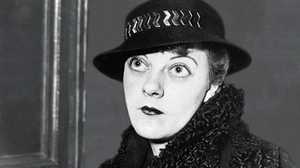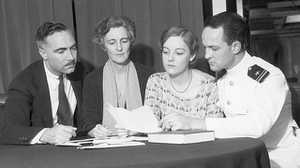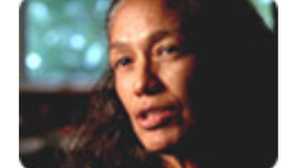Before the era of package tours and charter flights, visitors to the U.S. territory of Hawai'i traveled by steamship, docking at Honolulu. They found a richly diverse population, a bustling city, inviting beaches — and sidewalks crowded with men in uniform. By the 1930s, the U.S. Navy was as familiar a presence in this strategic port as were the beach boys of Waikiki.
-
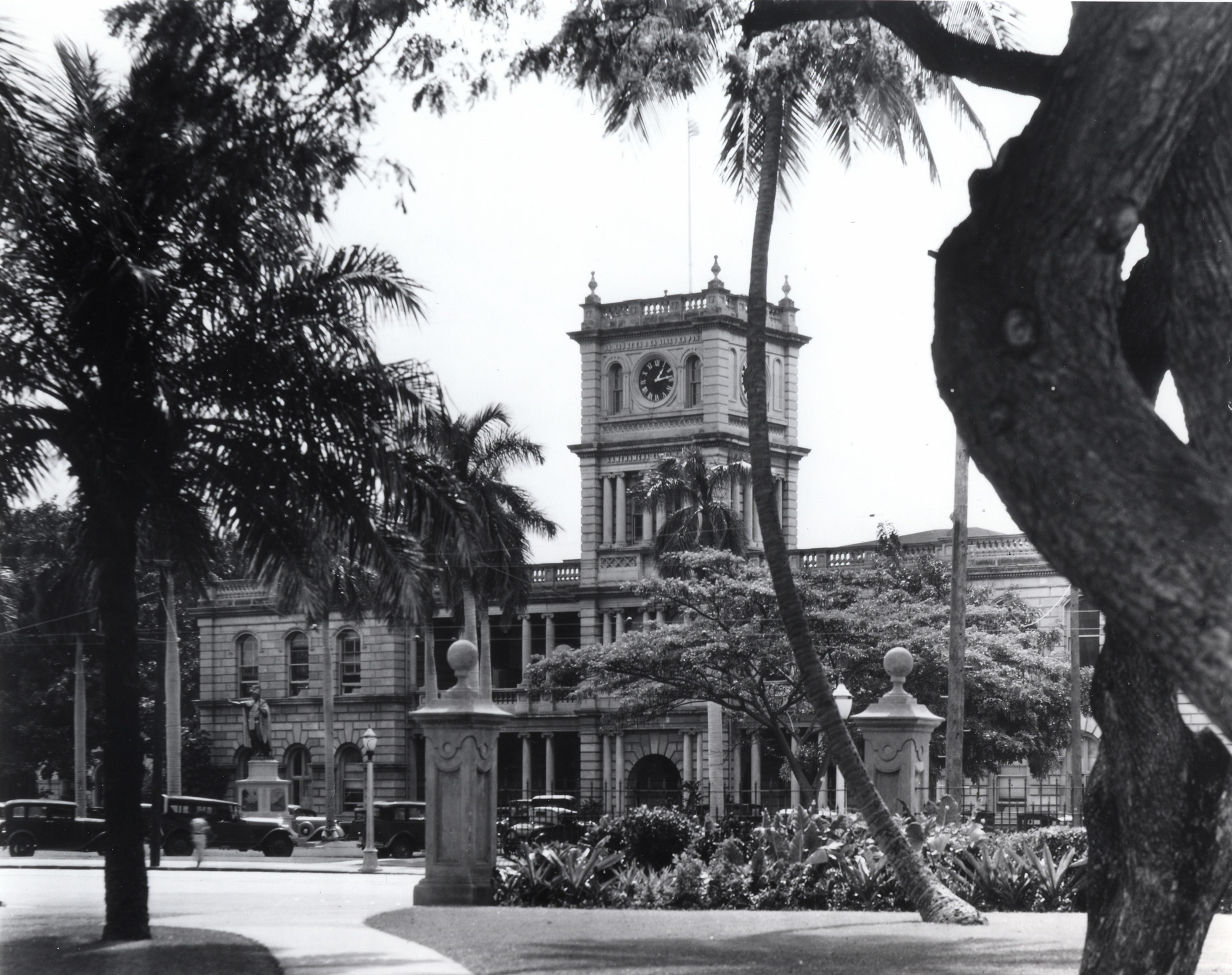
The exterior of the Judiciary Building in Honolulu, where the Hawaiian parliament met under the monarchy.
"Directly opposite the Capitol is the Judiciary Building, where formerly the native parliament convened. Here it was, in 1893, that the proclamation was read which deprived Lili'uokalami, last of the soveriegns, of her throne." — Beautiful Hawai'i, J. Walker McSpadden, 1939
Credit: Hawaii State Archives -
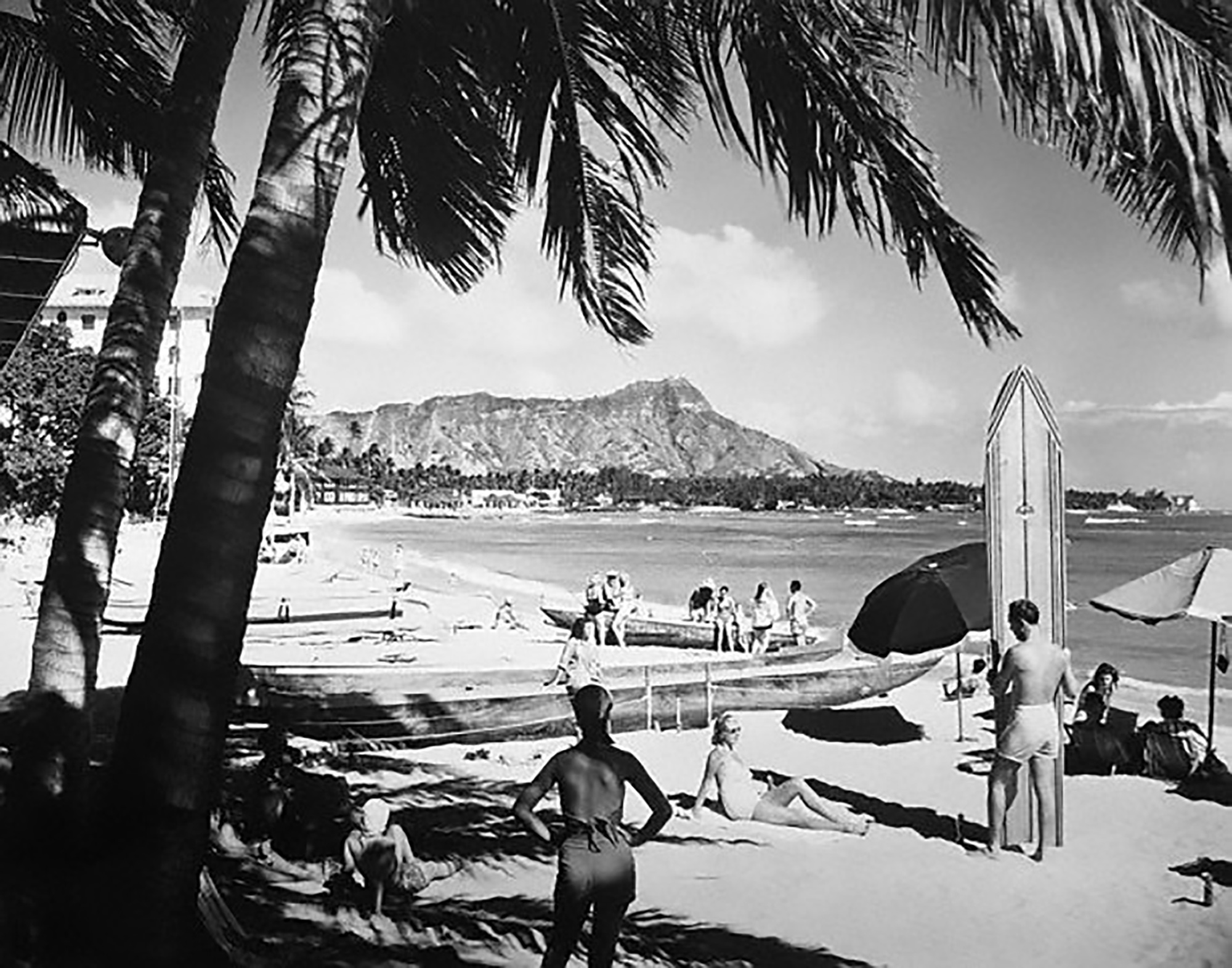
Vacationers revel in the sun and surf at Waikiki Beach. Diamond Head crater is visible in the background.
Credit: Corbis -
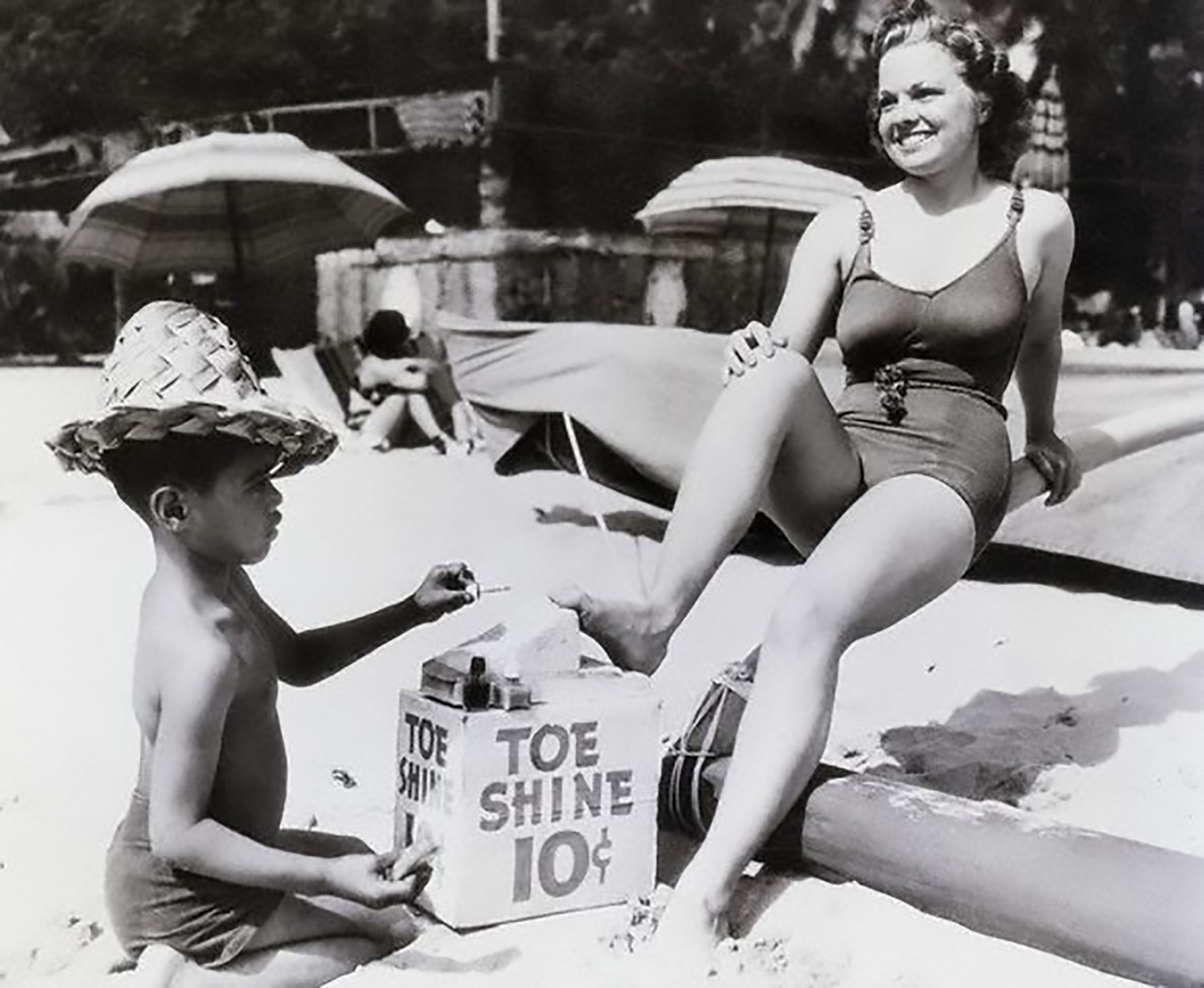
On Waikiki Beach, a Hawaiian boy paints a visiting tourist's toenails.
"The beach boys are a very integral part of the hospitality industry already in 1931. There is a history and a tradition of that. So if you needed an umbrella pitched and speared into the sand, or if you need a cool drink, or if you need to get surfboard lessons or ride a canoe — anything that you need to do that involves frolicking, the beach boys are there to satisfy." — Kanalu Young, program interviewee.
Credit: Corbis -

Outrigger canoes and surfers ride a wave into Waikiki Beach.
Credit: Corbis -

A group of sailors on leave walk through city streets.
"To Honolulu and Hawai'i, the army and the navy are a vital part of their existence, as well as a big economic factor... Our [U.S.] Government has seemingly left no stone unturned in Oahu to make the Pacific crossroads safe... Near Waikiki you ride right through Fort De Russy and close up to the disappearing guns that sullenly guard the eastern approaches." — Beautiful Hawai'i, J. Walker McSpadden, 1939
Credit: Hawaii Statel Archives -
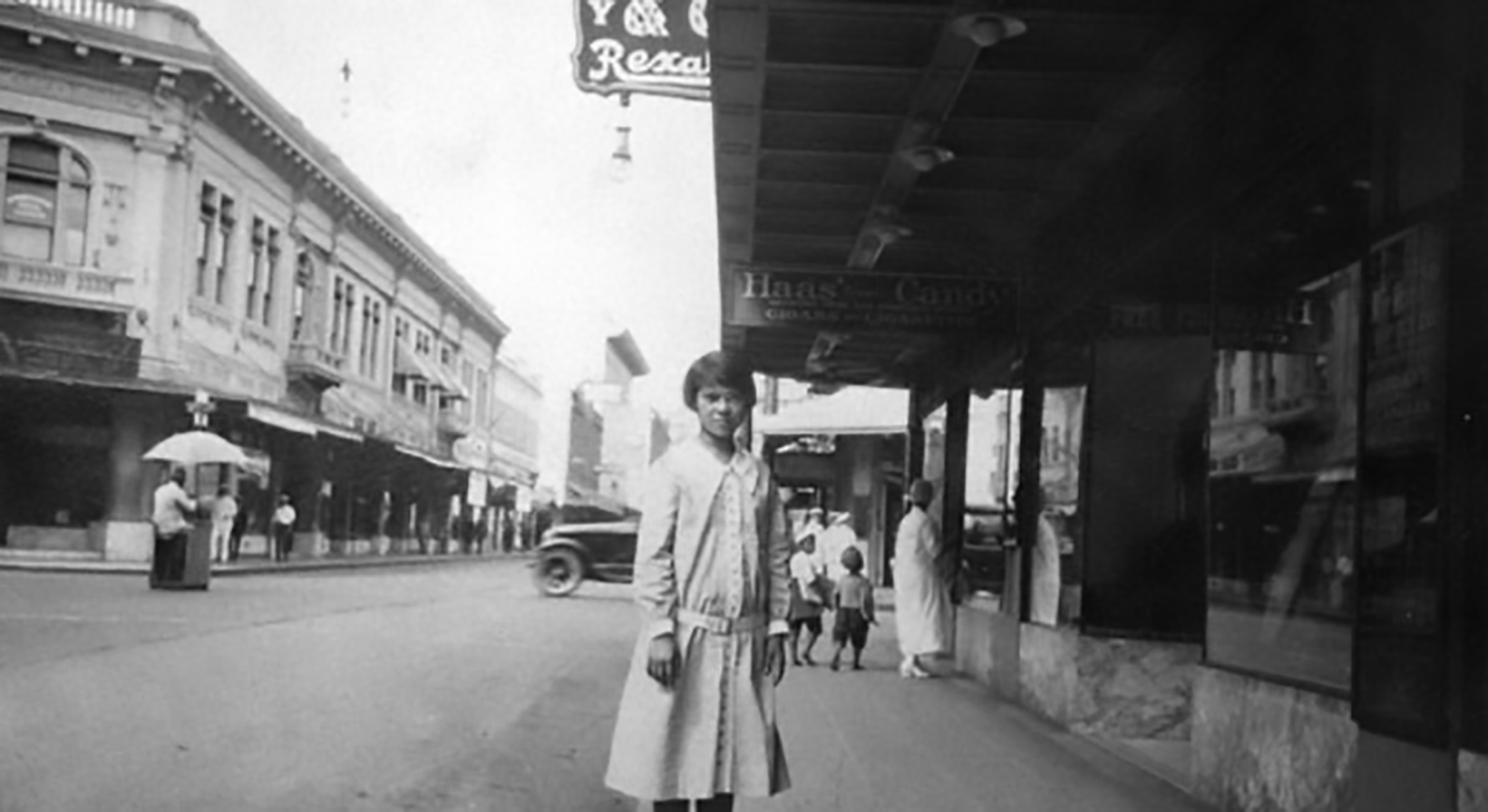
A young girl in downtown Honolulu.
Credit: Kay Napolean -
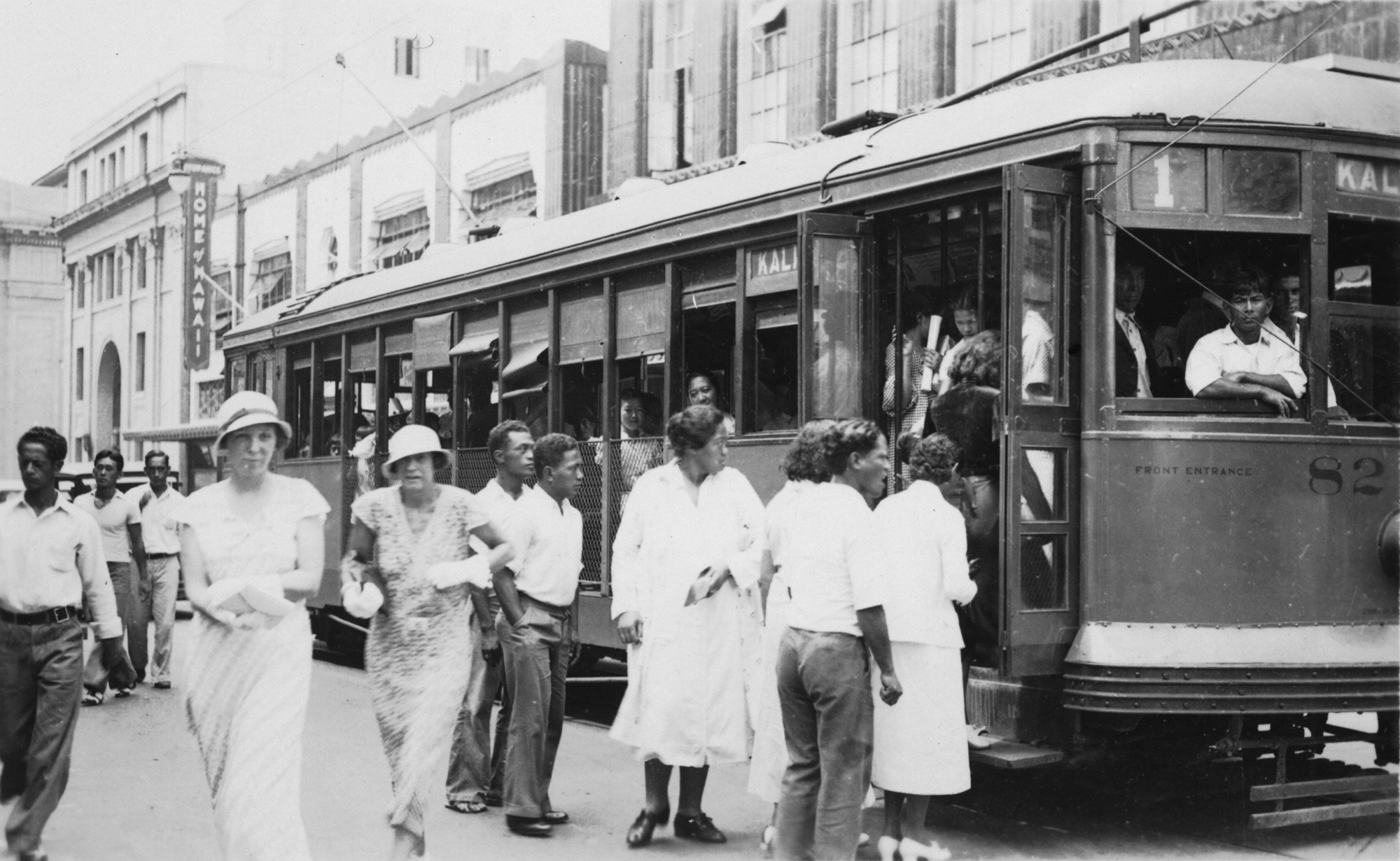
Commuters wait to board a streetcar at King Street.
"It is a city of about 150,000 souls and a very conglomerate racial mixture. The overworked term, 'melting pot,' comes at once to one's mind... Japanese, Chinese, Korean, Filipinos, Portuguese, a smattering of other foreign stock, and — yes —Hawaiian."— Beautiful Hawai'i, J. Walker McSpadden, 1939
Credit: Bishop Museum Archives -

A young man delivers water to workers removing streetcar tracks.
Credit: Bishop Museum Archives -
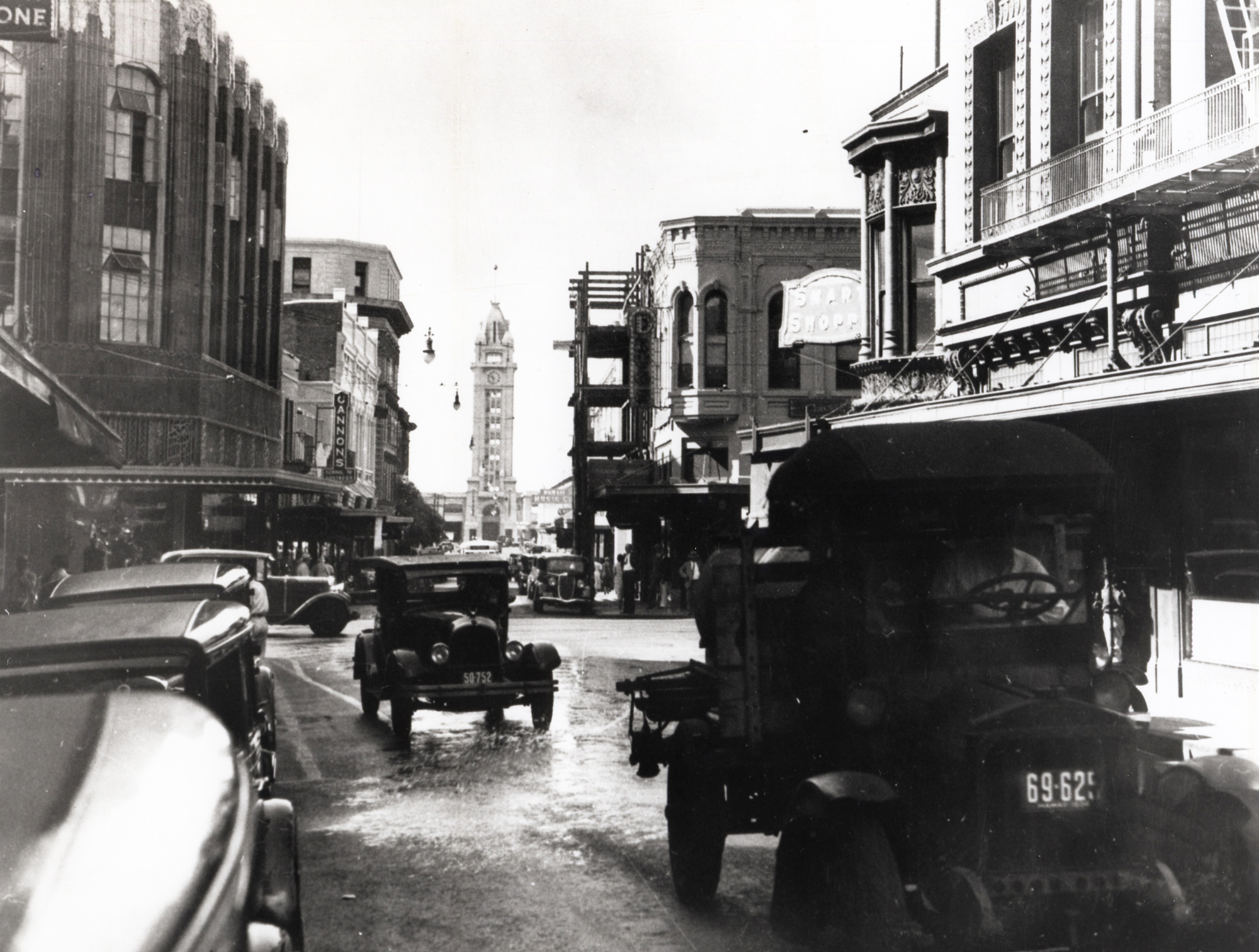
The ten-story Aloha Tower, visible in the background, was the tallest building in O'ahu for decades.
"Right there at the wharf is the graceful Aloha Tower which is literally a key to the city, for a trip to its lookout rewards one with a splendid view of city and harbor... The parapet at the top commands every point of the compass." — Beautiful Hawai'i, J. Walker McSpadden, 1939
Credit: National Archives -
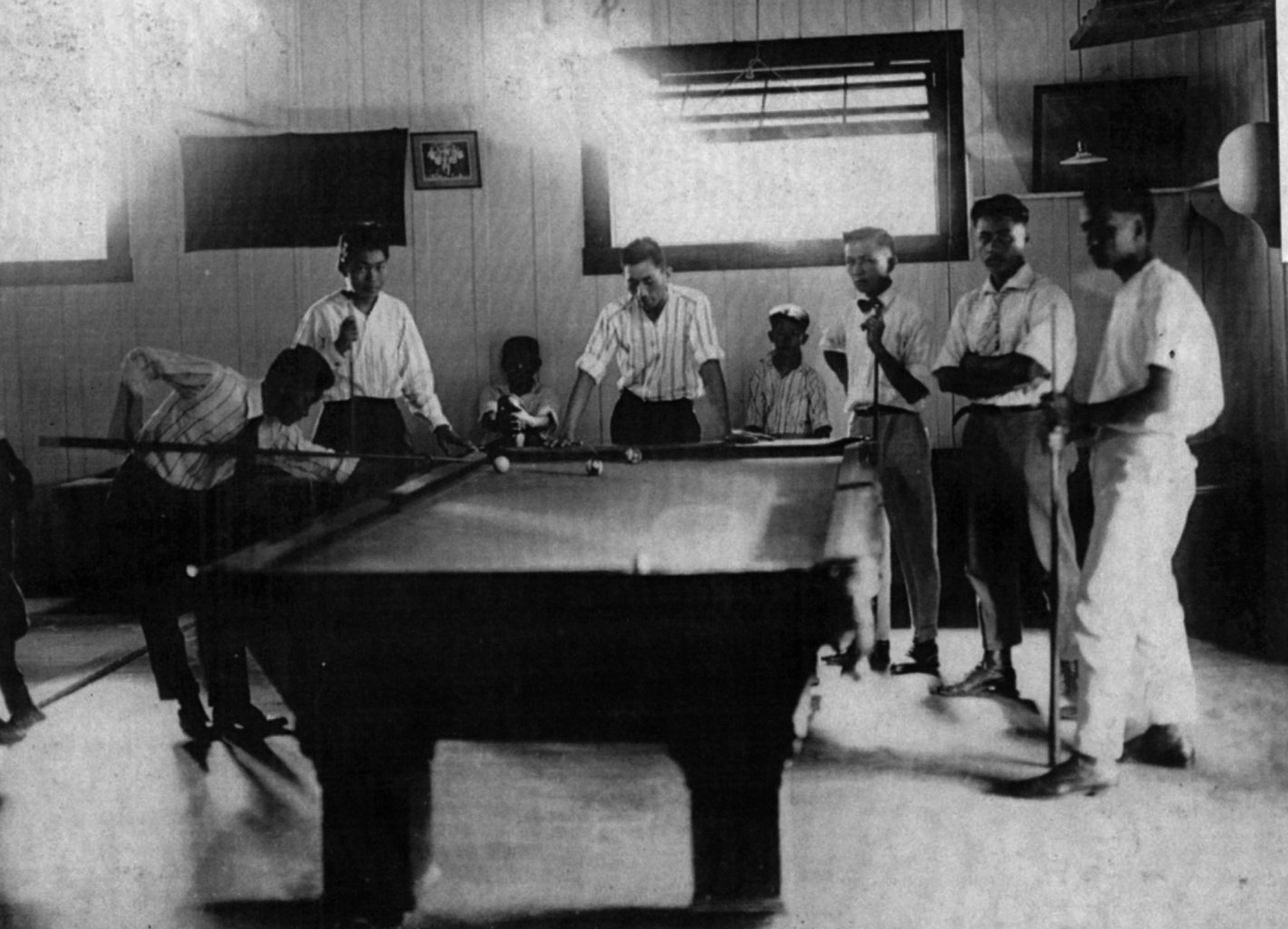
A young man lines up his next shot in a crowded pool hall.
Credit: Palama Settlement House -
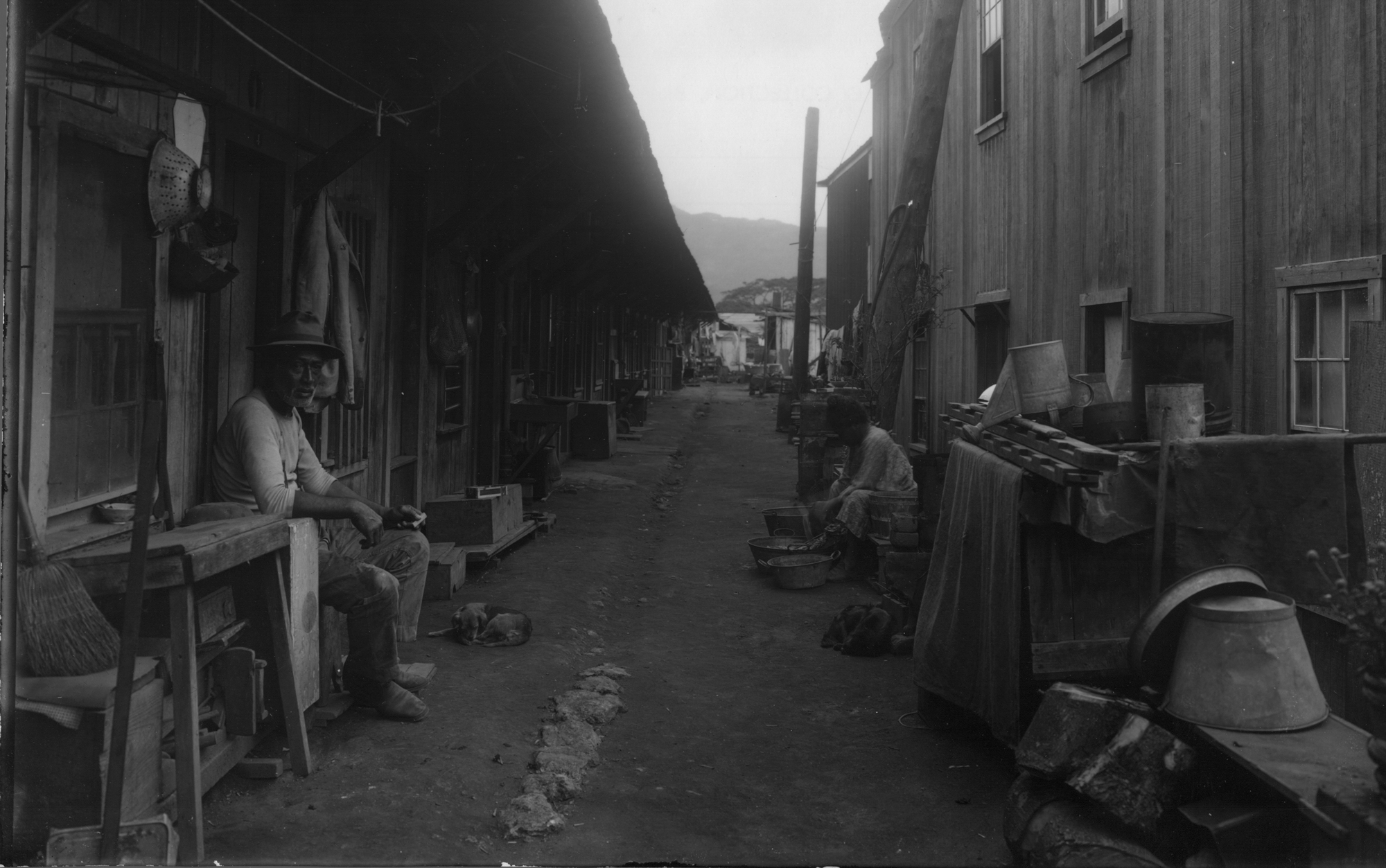
A man and a dog sit in an alley in Honolulu's Palama neighborhood, while another man prepares food.
"This section housed the slums of Honolulu, and was filled with strange smells, muddy streets and small frame houses that were little more than shacks... There were few haoles in this neighborhood and most of the residents of the area learned at an early age to shout at the white boys: 'Haole pilau!' This, loosely translated, means "the white boy stinks.'" — Rape in Paradise, Theon Wright, 1966
Credit: Palama Settlement House -
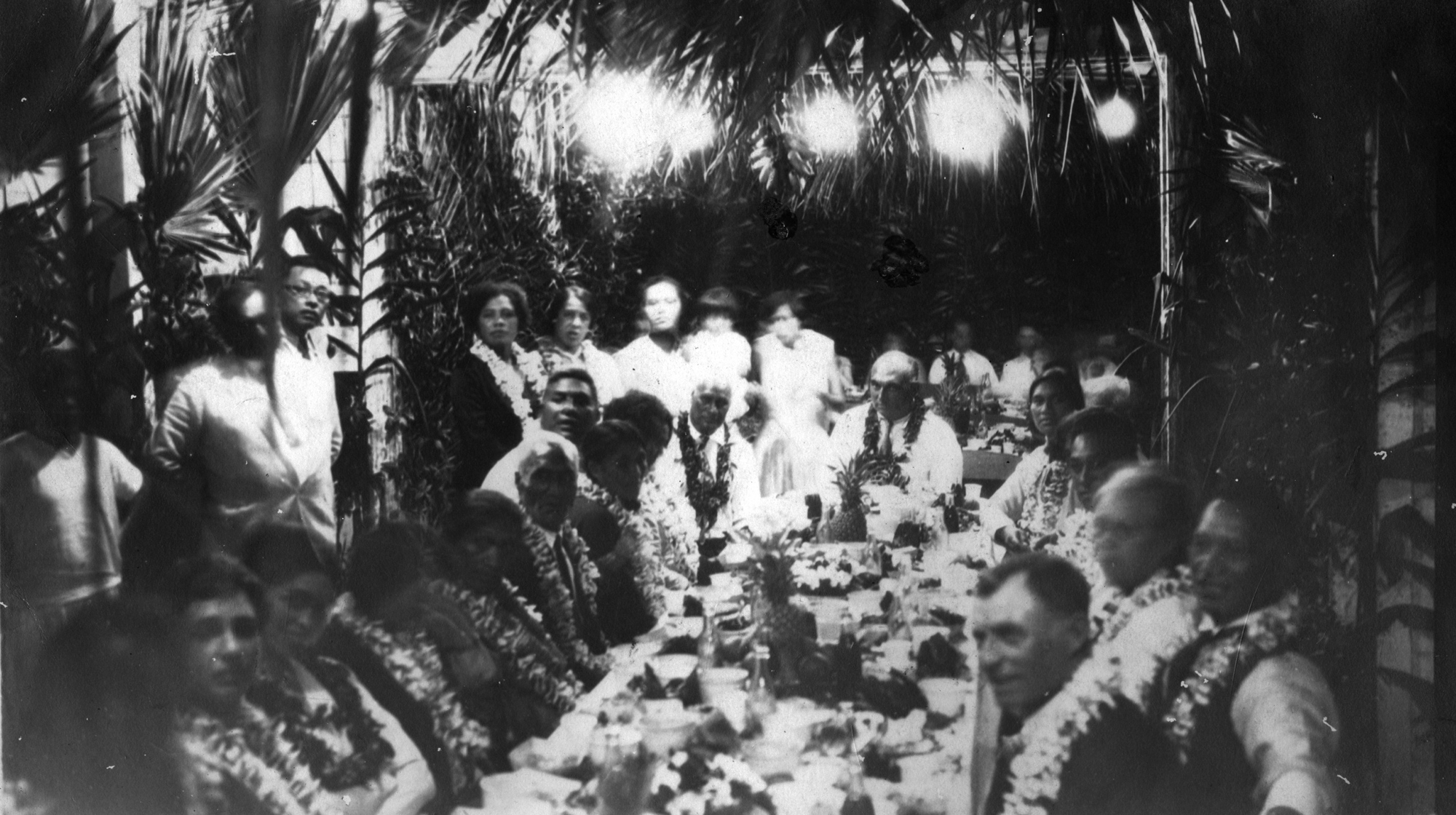
A large group sit around a long table at a lu'au, a traditional Hawaiian feast.
Credit: Kay Napolean




